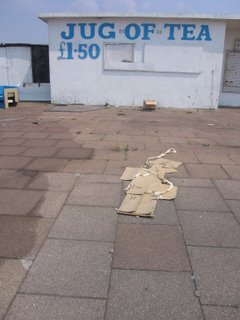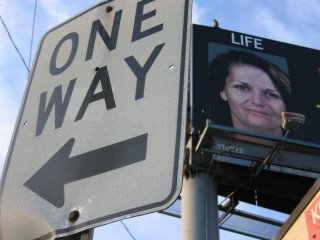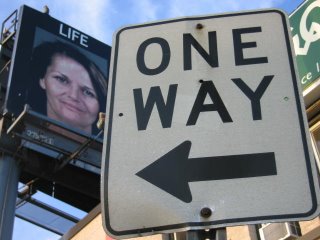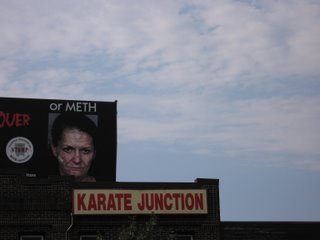
This is a silent film club back in my hometown of Morecambe--a seaside town in northern England. In the 1910s and 20s, holidaymakers used to gather there on the weekends and watch Chaplin films after a day on the beach. Old Florence would provide piano accompaniment from the corner while smoking her fag while the kids ate ice cream. Or so I like to imagine. Actually, it's not a silent film club at all. It's the back of Brucciani's cafe, one of the best remnants of art deco style in the town. But when I first took the photograph it looked to me very much like a silent film club, which is why I span this fib out for a minute. But seriously, I think that Brucciani's embodies the ghostliness of seaside towns today. To go in there is to step into a place where past and present collide in delightful but oddly unsettling ways. And this is the strange allure of down-at-heel English seaside towns, I think. They're enjoyable because they take you into a past that's vying for some kind of recognition as a legitimate form of mass entertainment. The large bright rectangle at the back which I reimagined as a movie screen is in fact a frosted window that depicts a Venetian canal scene. The window, like most of the other fittings has been there since the cafe was built in the 1930s. Be sure to visit there if you find yourself in olde Morecambe towne.
Here's a detail from the window:
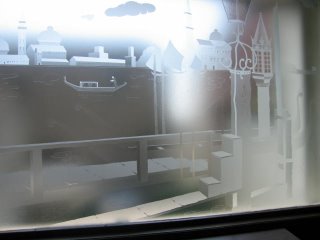
Nice isn't it? This has to be one of the most sublime places in Morecambe. By the way, Brucciani's does wonderful poached eggs and creamy mushrooms on toast. The mushrooms are out of a can but taste dreamy to me. I heartily recommend them. Just be careful when trying to squeeze your elbows onto the tiny tables or you might be in for trouble. By the way, Brucciani's is a listed building, you know.



